Technical Reports
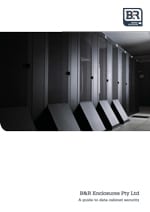 |
A guide to data cabinet securityWhen ordering or designing a data cabinet, it is important to understand the different forms of security available, to ensure you get the most out of your cabinet. This article is a guide to cabinet security, explaining the merits and limits of different forms of security in certain applications. |
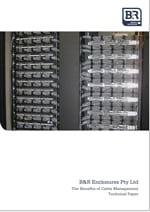 |
The Benefits of Cable ManagementThis paper discusses the risks of neglecting cable management, the benefits of it, and the different types of cable management available. It also offers suggestions on how to get the best use out of your cabling systems. |
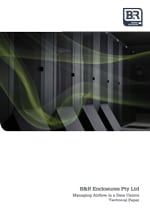 |
Managing Airflow in a Data CentreThis paper discusses the most effective ways to manage airflow in a data centre. Savings can be made not only by optimising air-conditioning usage, but also by reducing equipment turnover. |
 |
AS/NZS 61439 - Information PaperAS/NZS 61439 is the new series of standards for low-voltage (LV) switchgear and controlgear assemblies. To help you through the transition from AS/NZS 3439.1 to AS/NZS 61439.1.2, B&R have created a paper covering key points and changes. |
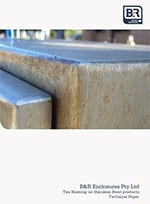 |
Tea Staining on Stainless Steel ProductsTea staining of stainless steels is a phenomenon that occurs where water with a significant chloride content is in regular contact with the metal surface. |
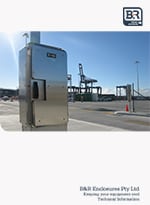 |
Keeping your equipment coolKeeping internal equipment operating at optimal temperatures can be difficult to manage. Sometimes the internal equipment needs to be cooled and other times it needs to be heated depending on a number of considerations. Regardless, the objective remains that the equipment should be protected at all temperatures. All applications have various considerations and solutions which combine to create a complex decision-making process. |
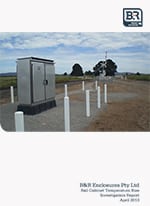 |
Rail Cabinet Temperature Rise Investigation ReportVictorian railways have traditionally used single skinned cabinets built to VRIOGS (Victorian Rail Industry Operator’s Group Specification) for both metropolitan and regional installations. With the implementation of new technologies in the rail industry, heat rise within signalling cabinets has become an issue due to the more electronic nature of control equipment. |
Anti-Condensation in Electrical EnclosuresWhen conditions are humid or the temperature in an environment suddenly drops, the water held in the air around us cannot stay suspended as a gas, and must condense back into water. It does this on any cold surfaces it can find including car windows, grass, mirrors, etc. The temperature at which this happens is called the DEW POINT and the water that condenses is known as condensation (or dew). This same effect can cause problems with electrical equipment as condensation can occur inside enclosures and on sensitive equipment if they are not suitably protected. |
